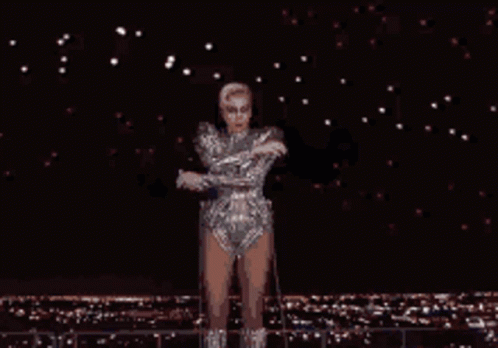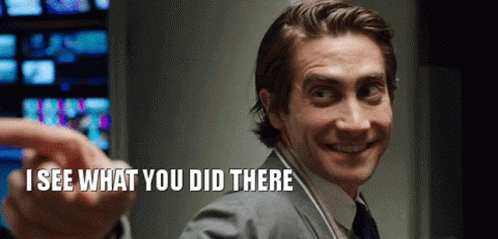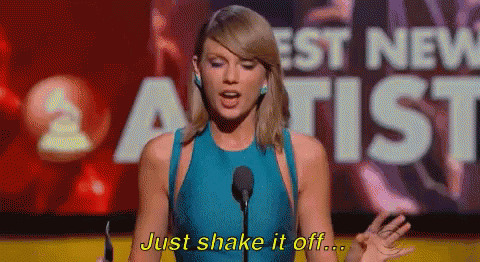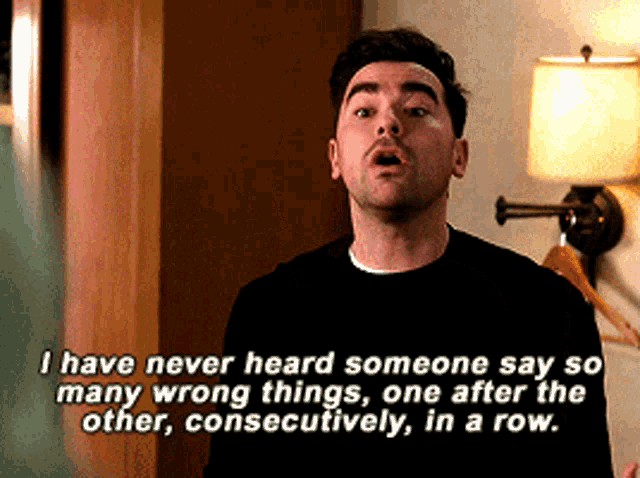The 4-Step RSD Survival Guide - Tackling Rejection Sensitivity in ADHD
Learn the root cause of Rejection Sensitive Dysphoria in ADHD and discover a tried-and-true method for dealing with it!
As a late-in-life diagnosed ADHDer, few things have been more transformative than discovering Rejection Sensitive Dysphoria (RSD), a condition often experienced by individuals with ADHD involving extreme emotional sensitivity to rejection. For decades, I attributed my interpersonal struggles to “bad anxiety” and the unfortunate reality of being a people-pleaser. It never occurred to me that these qualities weren’t the problem at all, but my maladaptive solutions to something much deeper.
The more I learned about RSD, the more I could see how so much of what I felt anxious about in a day could be traced back to one thing: the avoidance of rejection (at all costs). As I scanned the common RSD outcomes, I began to see how living with it (untreated) had wreaked havoc on virtually every aspect of my life:
Poor self-esteem? Check.
Track record of perfectionism and people-pleasing? Absolutely.
Diagnosed with depression and anxiety? Yup.
Burnout in the workplace and un-pursued employment opportunities? Check, check.
Inability to receive even the slightest well-intentioned piece of critical feedback without spinning out into a pit of self-doubt and shame? Yes.
Avoidance of social interactions such as dating? Check. Note: for some, an alternative to avoiding dating is entering into relationships with partners who mirror their low self-worth back to them, contributing to why ADHD women are five times more likely to end up in abusive relationships than non-ADHD women.
The Power (and Problem) of a Label
The label of Rejection Sensitive Dysphoria has been vital in my journey toward self-recognition and acceptance. Where I once judged myself as too sensitive and attributed my challenges to flaws in character, I now felt compassion for a girl struggling with unidentified and unsupported neurological differences. It transformed my relationship to my emotions and to myself. But the more I educated myself on RSD, the more I came to understand the term is causing great controversy in the ADHD community.
The term Rejection Sensitive Dysphoria was made popular by psychiatrist, Dr. William Dodson. Dodson has written and spoke extensively about his clinical experience treating RSD and while he has done a great deal to validate the lived experience of ADHDers everywhere, there are three main criticisms of his work.
Medication as the only treatment. Even though there is no formal research to support the claim, Dodson has stated many times that medication is the “only proven treatment” for RSD. I found myself conflicted when I first heard this. For years I had been told to just “change my thinking” (which I had internalized to mean “do better”). I felt like Dodson was saying to me: this isn’t your fault and the relief I felt was immense. But I, like many others, also found it disempowering to hear that my only hope was a medication that might work, if I could afford it, it was available where I lived, it wouldn’t interact with my other medications and I could tolerate the side effects.
No real explanation. Dodson markets RSD as an unexplainable “thing” that happens in an ADHD brain. In a 2019 ADDitude magazine webinar, he states, “we don’t actually know what it is. It’s much too early to tell. But it does seem to be a thing which many people with ADHD identify”. The obvious criticism here is that his description of its nature being “unclear” does little to help us in our pursuit to treat it. Note, top ADHD expert Dr. Russell Barkley disagrees with Dodson on this point and offers a thorough explanation into the origins of RSD, off of which this Guide is built.
No formal research. All of Dodson’s claims are based on his “clinical experience”, meaning no formal research has been done on this. His rebuttal to this is that RSD is not yet fully validated and accepted by the medical community, making it difficult to obtain funding and support to conduct any formal studies. With 60% of his patients finding relief through these medicines, he argues that the real issue of ethics is not in a lack of evidence-based practice but in our dismissal of practice-based evidence, concluding that he can’t “in good conscience” play an active role in withholding this potentially “life-changing” treatment when it could take 30 years for science to catch up to the lived experience of his patients.
Where Do We Go from Here?
Given all of this, some in the community refuse to use the term Rejection Sensitive Dysphoria altogether, instead using the less-medicalized term rejection sensitivity. While more neutral, I found that without the word dysphoria in the name, it didn’t capture the essence of the experience. Telling others I was “sensitive to rejection” didn’t feel like it communicated my often-times debilitating experience.
I found myself torn. In a world plagued by an outdated understanding of ADHD, is there value in bringing attention and accurate language to what many consider to be the most impairing part of their ADHD? Absolutely.
But is there danger in promoting the idea that it’s unexplainable and without a certain medication we are destined for a lifetime of pain and suffering? No question.
Language aside, I knew Dodson’s explanation for RSD (or lack thereof) didn’t hold up against everything I was learning about ADHD, most of all through my own self-observation. My research revealed that many experts, including the highly-respected Dr. Russell Barkley, see it as deeply connected to the core impairments of ADHD, with non-medication interventions abound. After months of employing them myself, I learned that with the right systems and accommodations, my RSD, while deeply annoying, was not life-limiting.
The 4-Step RSD Survival Guide
STEP 1: Understand what is actually happening inside your brain
We can’t solve for a problem we don’t understand. That is the why our first step is to look at what is happening under the surface of RSD. Two explanations in particular changed the game for me:
Rejection can be emotional and ADHD brains struggle to regulate our emotions
In a 2023 video posted to YouTube, Dr. Russell Barkley argues that RSD, like any part of the ADHD experience, can be explained using the widely-accepted Executive Functioning Impairment Model of ADHD, specifically looking at the function of emotional self-regulation. Barkley defines emotional self-regulation as made up of a few core functions: the ability to (1) inhibit inappropriate behaviour related to strong negative or positive emotion; (2) self-soothe and down-regulate physiological arousal; (3) refocus attention from the emotionally provocative events and finally (4) organize new emotions in the service of long-term welfare.
When you think of what is needed to overcome moments of rejection, it is pretty much this list. We need to stop the negative thoughts that might arise; we need to calm ourselves down; we need to stop ruminating about it and we need to construct new, more helpful thoughts. Understanding that ADHD brains have been shown to have impairments in these functions begins to paint a clear picture as to why we might struggle with rejection more than our neurotypical friends.
The ADHD brain is prone to automatic thinking (AKA jumping to conclusions)
It is estimated that children with ADHD receive 20,000 more negative messages by age 10, on average. I believe that over time these external messages take root in us as our core self-concepts, forming beliefs like, “I’m not good enough”, “I always screw up” or “of course they don’t like me”. This can become our default mode of thinking, the foundation of our automatic thoughts. Unfortunately for us, the ADHD brain loves automatic thoughts. In a 2021 interview with Dr. Sharon Saline, my own teacher, Jeff Copper, shares that we can use Russell Barkley’s Executive Functioning Impairment Model of ADHD to see that ADHD, put simply, is a thinking impairment (Jeff elaborates on this more here)
ADHD brains are known to favour black-and-white thinking. When someone leaves our text on read, it’s easier for our brain to assume the worst than it is for it to brainstorm alternatives. We revert to what’s automatic and familiar (and therefore more comfortable for our brain). Jeff quotes Carl Jung who famously said, “thinking is difficult. That’s why most people judge”. In the context of RSD we could adjust this quote to say, “thinking is difficult. That’s why an ADHD brain jumps to conclusions based on old ideas and beliefs”.
STEP 2: Call out your RSD
Our oversized emotional response to a situation is the hallmark trait of RSD. Subsequently, an RSD brain can’t be trusted to give us an accurate appraisal of the situation. One of the most powerful things I’ve started to do is naming when my RSD is, well, RSDing. This gives us the opportunity to sit back and go “okay…my brain is doing the thing. Its appraisal of the situation is likely distorted and therefore, the stories it is feeding me are likely untrue. I can let these thoughts pass without gripping onto them as truth”. Naming it also gives us language to communicate to others what is happening for us.
Pro tip: Take the time now to educate your loved ones about RSD (consider sending them this article) so they can better support you in a distressing moment (and take your reaction less personally if it’s directed at them). Since learning about RSD alongside my loved ones, I no longer hear the dreaded (and most unhelpful) phrase, "you're overreacting," which had plagued my life for years. My family and friends now understand that my reaction is absolutely appropriately-sized to the situation, as I am experiencing it. Rather than trying to convince me otherwise, they know their energy is better spent helping me to get regulated, the next step in our Guide.
STEP 3: Shake it off (no, literally)
Acceptance by our peers is a primal drive for all humans—our ancestors were highly motivated to avoid rejection by the pack, as it could jeopardize their safety, shelter, and access to food. This survival drive is alive and well in all of us today. When we perceive real threats to our safety, our sympathetic nervous system is activated, triggering the fight, flight, freeze, or fawn response. From here we experience what is called an “amygdala hijack” where access to rational, reasoned thinking is disabled and we instead rely on shallow, automatic thinking. And as we just learned, this type of thinking often gets us ADHDers into trouble.
The problem is that for those with RSD, being highly sensitive to rejection means we spend a lot of time in our sympathetic nervous system as we are constantly scanning for and registering rejection as a “threat”: a weird look from a co-worker? Not safe. Someone didn’t laugh at my joke? Extreme danger!
Step three in the RSD Survival Guide is all about shutting down the amygdala hijack and shifting back into our parasympathetic nervous system where we can once again access our prefrontal cortex - the part of the brain responsible for reasoning, decision-making, and planning. The prefrontal cortex has been called the home of logic (RSD’s kryptonite). While it’s not as simple as flipping a switch, there are two techniques that can really help us with this:
Shaking: Animals will literally “shake off” their freeze response after a life-threatening situation which helps to release the energy. Beth Shaw explains, “shaking or trembling, which comes from the limbic brain (the part of the brain that holds emotions), sends a signal that the danger has passed and that the fight-or-flight system can turn off. They are literally finishing the nervous system response to release the traumatic experience from the body”. I personally find the length of Taylor Swift’s Shake it Off to be a great amount of time to shake for after a run-in with my RSD.
Breathing: After a good shake, I’m ready to slow down. Something as simple as Box Breathing (breath in for four counts, hold for four, breathe out for four counts, hold for four, etc.) can help activate the parasympathetic nervous system. Check out this article for a breakdown of four of the most effective breathing exercises to regulate the nervous system.
STEP 4: Prove your RSD wrong
Now that you’ve got yourself back into your thinking brain, it’s time to prove those automatic thoughts wrong. I have found these four questions (rooted in Cognitive Behavioural Therapy) given to me by my own Therapist to be the most effective at cutting through all the lies my RSD tries to feed me. Not once have I run my RSD’s automatic thought through these questions and had it stay standing on solid ground on the other side.
What is the painful/problematic thought?
What is the evidence to support this thought?
What is the evidence against it?
Using this evidence, turn the problematic thought into a truthful statement.
Pro Tip: As ADHDers, we are verbal processors. Often for us, to think is to talk. To really put up your best defence against your RSD, consider asking a loved one to walk through these questions with you.
If you’ve made it to the end, congratulations! My hope and dream is that this Guide can serve as a helpful tool in difficult times for you. Please let me know how it goes by commenting on this post or messaging me directly with any questions you might have.
Lastly, I recognize remembering all these steps, especially in a moment of dysregulation, might be difficult. I’m considering recording a little guided meditation of these steps (a digital RSD First Aid Kit if you will) and offering it for free to anyone interested. This way all you have to do is remember to hit ‘play’ and I can walk you through the rest. Again, let me know in the comments if you would be interested in this :)









Such an informative and helpful article! The audio first aid kit sounds brilliant too. Thanks for sharing, another fantastic read.
So many revelations in just one article, thank you Laura! I'm definitely in support of the RSD first aid kit ❤️